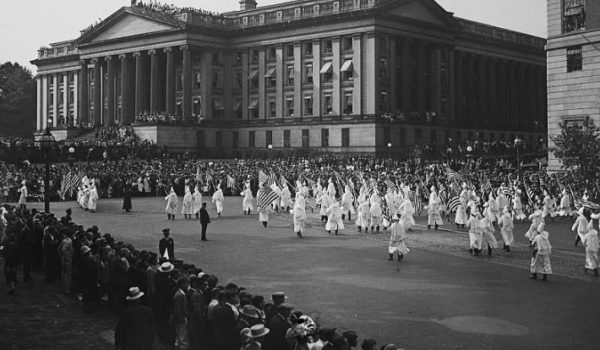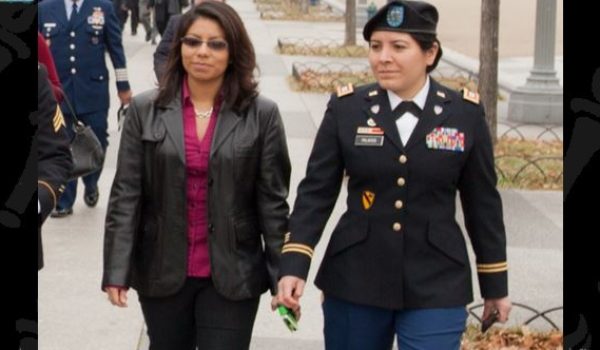
At National Review, Deroy Murdock has an eye-opening article today. Working from the facts compiled by Judicial Watch in its Election Integrity Project, he has come up with some remarkable figures on voter registration and demographics in the United States.
Note, first of all, that the figures he’s working with are from the select set of counties that have more registered voters than eligible citizens. In other words, this is not a grand total for the entire nation. That does, however, tend to magnify the startling nature of the numbers.
Murdock calls the excess registered voters “ghost voters.” He’s going with Judicial Watch’s figure of more than 3.5 million ghost voters across the USA — nearly half of them in California. (Yes, that’s over 1.7 million ghost voters in the Golden State alone.)
Will this presidential election be the most important in American history?
But Murdock digs into the data in more depth than that:
My tabulation of Judicial Watch’s state-by-state results yielded 462 counties where the registration rate exceeded 100 percent. There were 3,551,760 more people registered to vote than adult U.S. citizens who inhabit these counties.
“That’s enough over-registered voters to populate a ghost-state about the size of Connecticut,” Judicial Watch attorney Robert Popper told me.
These 462 counties (18.5 percent of the 2,500 studied) exhibit this ghost-voter problem. These range from 101 percent registration in Delaware’s New Castle County to New Mexico’s Harding County, where there are 62 percent more registered voters than living, breathing adult citizens — or a 162 percent registration rate.
The California numbers are staggering:
But California’s San Diego County earns the enchilada grande. Its 138 percent registration translates into 810,966 ghost voters. Los Angeles County’s 112 percent rate equals 707,475 over-registrations. Beyond the official data that it received, Judicial Watch reports that LA County employees “informed us that the total number of registered voters now stands at a number that is a whopping 144 percent of the total number of resident citizens of voting age.”
All told, California is a veritable haunted house, teeming with 1,736,556 ghost voters.
The ghost voters in San Diego County alone amount to more than the population of, say, Detroit, Memphis, Portland (OR), or Oklahoma City.
One interesting thing to me is that, according to the U.S. Census’ latest report from May 2017, the percentage of eligible U.S. citizens who are actually registered to vote is somewhere between 70.3% and 85.4%. (The uncertainty comes from the fact that not all respondents to the latest Census data update gave an answer on whether they were registered to vote. 70.3% affirmed that they were registered; 14.6% said they were not.)
That means the number of ghost voters would be even bigger, since the total of registered voters exceeds the total of the eligible population in theses 462 counties. Quite a few of the ghost voters are no doubt actual dead people, rather than fraudulently registered ineligible (i.e., illegal/non-citizen) or fictitious voters. But having dead people on the voter rolls creates another avenue for fraud, as repeatedly demonstrated over the years.
Obviously, it doesn’t mean anything by itself, that the excess ghost voter tally is 3,551,760, at the time of an election in which Hillary Clinton’s popular-vote edge over Donald Trump was 2,868,691. The voter turnout for the presidential race in 2016 was 60.2%, meaning that no ineligible/fraudulent votes were needed to account for the margin of the popular vote, although they may have factored in. You could presumably prove, moreover, that the Clinton-Trump popular vote margin didn’t depend on the voting in the 462 counties in question — although it would be interesting to see if there was an apparent correlation.
(And that said, we do know that there were votes cast illegally in 2016. See here, here, here , and here as well The point is not whether there were any, but whether they made a difference to the outcome.)
But Murdock points out that the close votes in a number of 2016 battleground states came in with margins under the total number of ghost voters in those states.
[In] battleground states…Electoral College votes can be decided by incredibly narrow margins. Consider the multitude of ghost voters in:
Colorado: 159,373
Florida: 100,782
Iowa: 31,077
Michigan: 225,235
New Hampshire: 8,211
North Carolina: 189,721
Virginia: 89,979
President Donald J. Trump’s supporters might be intrigued to learn that Hillary Clinton’s margins of victory in Colorado (136,386) and New Hampshire (2,736) were lower than the numbers of ghost voters in those states. Clinton’s fans should know that Trump won Michigan (10,704) and North Carolina (173,315) by fewer ballots than ghost voters in those states.
In other words, everyone — not just Republicans — should be concerned about the integrity of voter registration and elections.
Deroy Murdock suggests hopefully that they will be. But he also acknowledges some of the ways Democrats have worked to prevent election integrity:
Governor Terry McAuliffe (D., Va.) vetoed a measure last February that would have mandated investigations of elections in which ballots cast outnumbered eligible voters.
Even more suspiciously, when GOP governor Rick Scott tried to obey these laws and update Florida’s records, including deleting 51,308 deceased voters, Obama’s Justice Department filed a federal lawsuit to stop him. Federal prosecutors claimed that Governor Scott’s statewide efforts violated the 1965 Voting Rights Act, although it applies to only five of Florida’s 67 counties.
It’s doubtful that the Democratic leadership will change course at this point. The Democrats have been playing a long game for decades, and will probably even accept election losses in the short term to keep the vote from being provably honest and accountable. That’s what it takes to make all of America look like California’s electoral “haunted house.”




